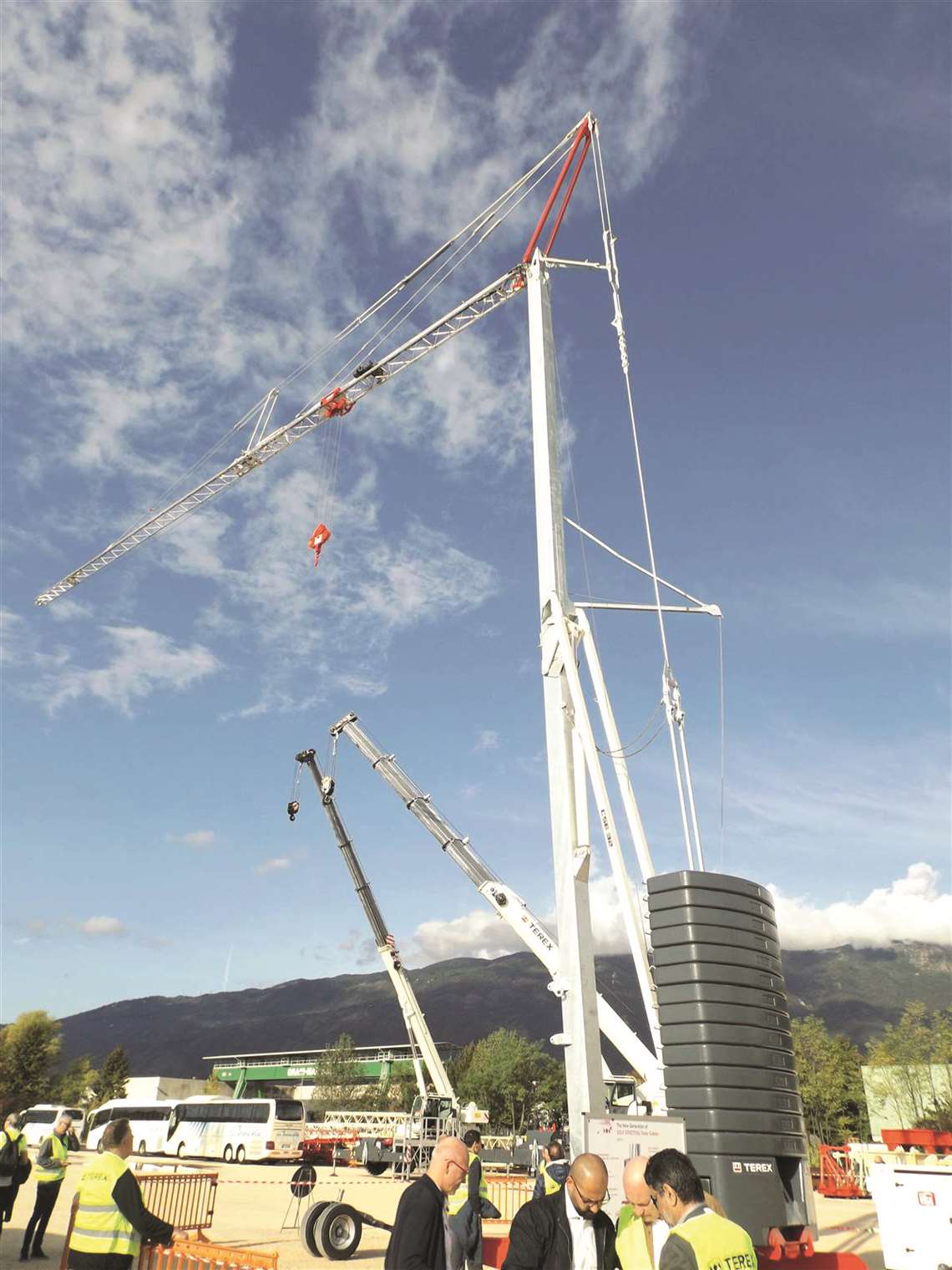Self erecting tower cranes: the rise of residential
26 April 2021
The unprecedented rate of urbanisation across the world has led to increased demand for housing. With contractors competing for lucrative contracts it’s clear, time is money and so anything that speeds up the rate of construction is positive. Enter the self erector…
The unprecedented rate of urbanisation across the world has led to increased demand for housing. With contractors competing for lucrative contracts it’s clear, time is money and so anything that speeds up the rate of construction is positive. Enter the self erector…
“We are able to build houses 50 percent faster with self erecting tower cranes than with other types of equipment,” said Dusty Bitton, owner of Pinetop Custom Homes (Pinetop), a homebuilder in Idaho, USA. “They’re also easier to get to the jobsite. They have axles underneath, so you can just pull them onto the site. They’re silent from electrical operation and don’t produce exhaust fumes, and with remote controls, they can really increase visibility and precision picking.”
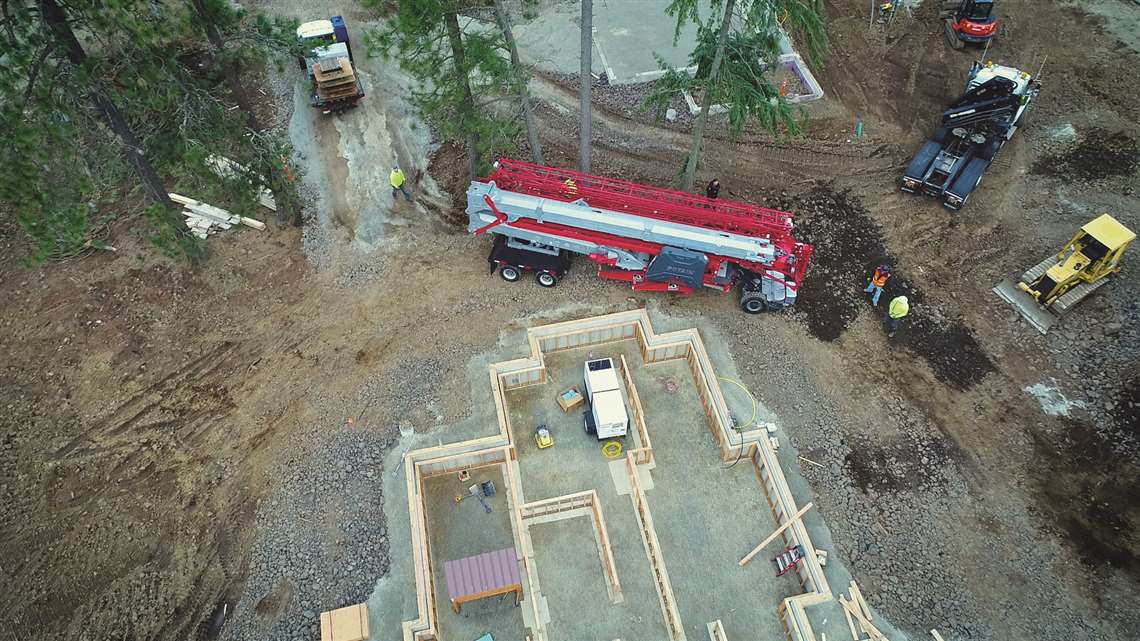 Pinetop says it can build houses 50 percent faster with self-erecting tower cranes than with other types of equipment
Pinetop says it can build houses 50 percent faster with self-erecting tower cranes than with other types of equipment
Pinetop started with a single Potain Igo unit, made by Manitowoc, back in 2004. Today, together with its sister company, Rocky Mountain Crane, it operates a fleet of 25 Potain self erecting cranes, covering both the Igo and Hup ranges.
Pinetop and Rocky Mountain Crane, highlight why they use self erectors in this video from Manitowoc.
Another USA-based contractor using Potain self erectors is Fager Framing Inc. (Fager), also located in Iowa. It is using a Potain Igo T 85 A to erect the structure of a large building. According to Manitowoc, its choice of crane is driving productivity and simplifying onsite operations, replacing more conventional construction equipment such as telehandlers and mobile cranes.
“We can literally cut our production times in half because of the functionalities of the crane,” affirms Ben Mather, project manager at Fager. “You can use one crane versus five different pieces of machinery.”
The Potain Igo T 85 is also being used by Frana Companies to build multi-unit apartment complexes in Minnesota, USA. They are being used to lift large pieces of prefabricated flooring and wall sections. “Self erecting cranes are easy to set up and dismantle. You place them right on the jobsite, and you get the swing radius that can cover most or all of the building area,” said Kelly Anderson, equipment manager at Frana Companies.
According to Manitowoc, using this type of crane enabled Frana Companies to prefabricate both the flooring and wall sections offsite in advance of the job, and then bring those pieces to the construction site as opposed to assembling them onsite, which is more costly, time-consuming and susceptible to weather conditions.
Another USA contractor using a Potain self erector is Minnesota-based Link Construction. It hired a Potain Igo MA 21 from RMS Rentals and placed it between two homes to increase construction efficiency on both builds. “On these two homes the Igo MA 21 self erecting crane helped put us ahead of schedule by two-and-a-half to three weeks,” said Patrick Link, owner of Link Construction. “It saves us a lot of time because it’s just so quick and easy to operate. We used it for setting the floors, the walls and the roof trusses, among other tasks.”
A video of Frana Companies and Link Construction outlining why they use self erectors can be seen here.
European commission
Potain self erectors are also popular in Europe. Swiss building contractor Schulthess Holzbau hired a Potain Hup M 28-22 from Swiss Manitowoc dealer Stirnimann for an old schoolhouse conversion project in rural Reisiswil, in the canton of Bern. The crane has a maximum capacity of 2.2 tonnes and a 28 m jib.
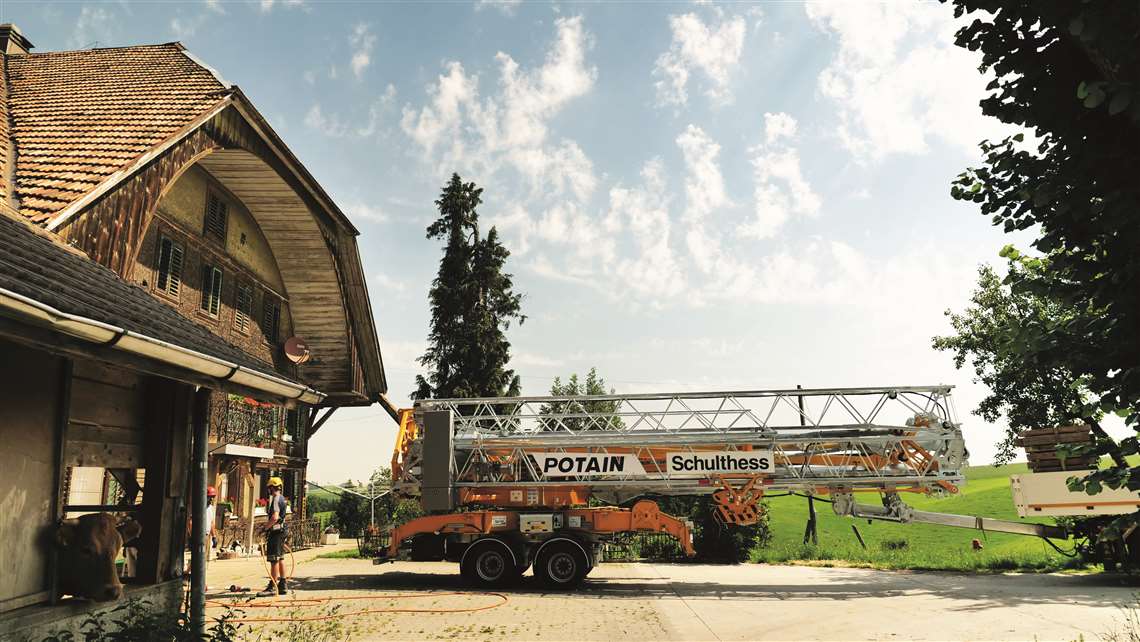 Schulthess Holzbau using a Potain Hup M 28-22 for an old schoolhouse conversion
Schulthess Holzbau using a Potain Hup M 28-22 for an old schoolhouse conversion
Over a nine-week period, the Hup M 28-22 lifted prefabricated wooden construction elements, pallets with roof tiles, and various building materials weighing up to 2.2 tonnes.
“The project budget for a crane was only very small so it was essential to find one that could work efficiently and productively,” said Pascal Möckli, sales director for tower cranes at Stirnimann. “With simple transport, quick and easy set-up and a wide range of configuration options, the Hup M 28-22 is an efficient crane with a good cost-benefit ratio.”
It’s partly this ability to access awkward areas that is making self erecting tower cranes so popular at the moment. “Up and over reach enables the cranes to be placed right next to buildings and eliminates the problems with being ‘boom bound,’” explains Angelo Cosmo, senior marketing manager, at crane manufacturer Terex. “Once erected, self erecting cranes perform all of the project hoisting from one position, eliminating the need for forklift access paths.”
The company’s most recent self erector is the CSE 32. It lifts 4.4 tonnes and has a 32 metre jib. Tip load is 1.15 tonnes and the hook height can be altered between 19.7 and 21.5 metres. Its swing radius is 2.25 metres. Production started with a pre-series beginning of 2020 and Terex says it received the first orders soon after the product launch. “You can see the CSE 32 working in Italy, Germany and Belgium,”adds Cosmo, “and models are currently being shipped to France, Austria and Czech Republic. We are aiming to have a complete CSE range on the market by 2022.”
Milestones
Oss, The Netherlands-based crane manufacturer Spierings has delivered the 250th unit built of its SK1265-AT6 Mighty Tiny mobile folding tower crane model to German crane rental specialist Wiesbauer. Wiesbauer was one of Spierings’ first customers in Germany and its first unit was a SK477-AT4. Thomas Wiesbauer commented, “We are delighted with the 250th SK1265-AT6 from Spierings. It is a reliable crane that can no longer be ignored in our crane park.”
The new 10 tonne capacity SK1265-AT6 Mighty Tiny has a 60 metre maximum lifting height and lifts 1.7 tonnes at the end of its jib. Spierings is also planning to introduce a hybrid drive system for the upper crane. The SK1265-AT6 and SK597-AT4 can operate from a 32 amp mains power connection. A 25 kW-h lithium battery will be fitted to stabilise the power demand from the grid.
Switzerland-headquartered manufacturer Liebherr has delivered the 1,000th unit of its 81 K.1 fast erecting tower crane since its introduction in 2016. It went to family-run Mayer Hoch – und Tiefbau in Bavaria, Germany. The building and civil engineering company already has two other units of its type and 11 other Liebherr tower cranes.
The day after the handover the new crane was on its way to its first job, in Traunreut, in the Chiemgau region, where a residential complex with underground parking is scheduled to be completed by 2022.
The 81 K.1 lifts 6 tonnes and offers a 48 metre maximum radius. Mayer used his first unit to build a 655-space car park. Clever placement of the crane meant that the entire construction site was serviceable with just one machine, Liebherr says.
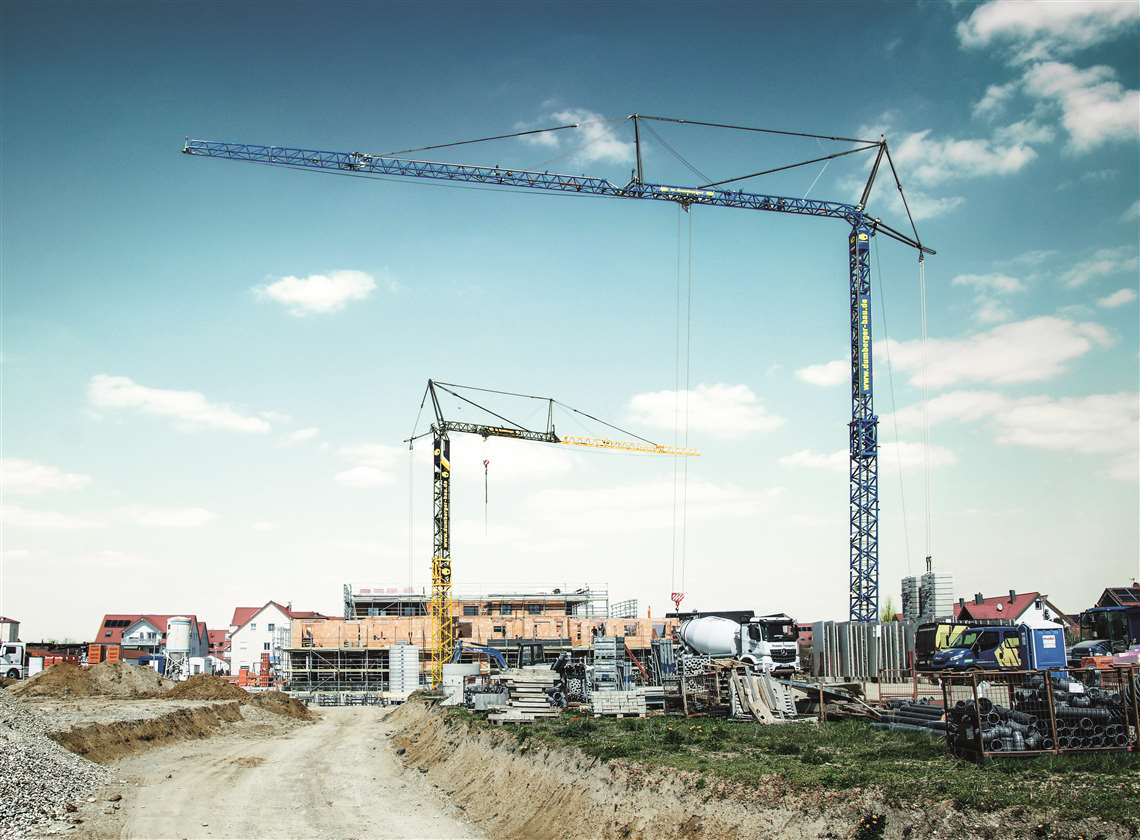 M. Dumberger Bauunternehmung using one of its new Liebherr 125 K cranes
M. Dumberger Bauunternehmung using one of its new Liebherr 125 K cranes
Remaining in Germany, in 2020 construction company M. Dumberger Bauunternehmung purchased six of Liebherr’s latest self erectors: the 125 K. The 125 K has been available since March 2019 and is available worldwide. The construction company utilised one of its new cranes immediately on a residential construction job in Langweid am Lech, near Augsburg. The 125 K will be in use throughout the construction project for tasks such as the lifting of prefabricated concrete parts weighing up to eight tonnes.
The 125 K has an initial hook height of 29.5 metres as standard. Five tower sections can be additionally inserted to reach a total hook height of 41.5 metres. Maximum capacity is 8 tonnes and, utilising its Load-Plus function, it can lift 1.3 tonnes with a 55-metre radius at the jib head.
It has a 3.2 metre slewing radius which can be extended to four metres. The 125 K can also be towed as a trailer using a conventional truck and Liebherr’s LiTRAX axle system.
France-based Uperio has a new distributor/dealer for its Arcomet self erecting crane and tower crane brand. The new dealer is based near Zurich, Switzerland. The company’s latest self erector is the A50 Eco, which it displayed at the 2020 ConExpo trade show in Las Vegas. Access to the US market may also now be further facilitated via Uperio’s acquisition of North American tower crane rental specialist, P&J Arcomet LLC.
With the increasing popularity of self erectors in the USA building on the crane type’s established base in Europe the future of the self erector looks promising, especially with demand for housing growing globally.
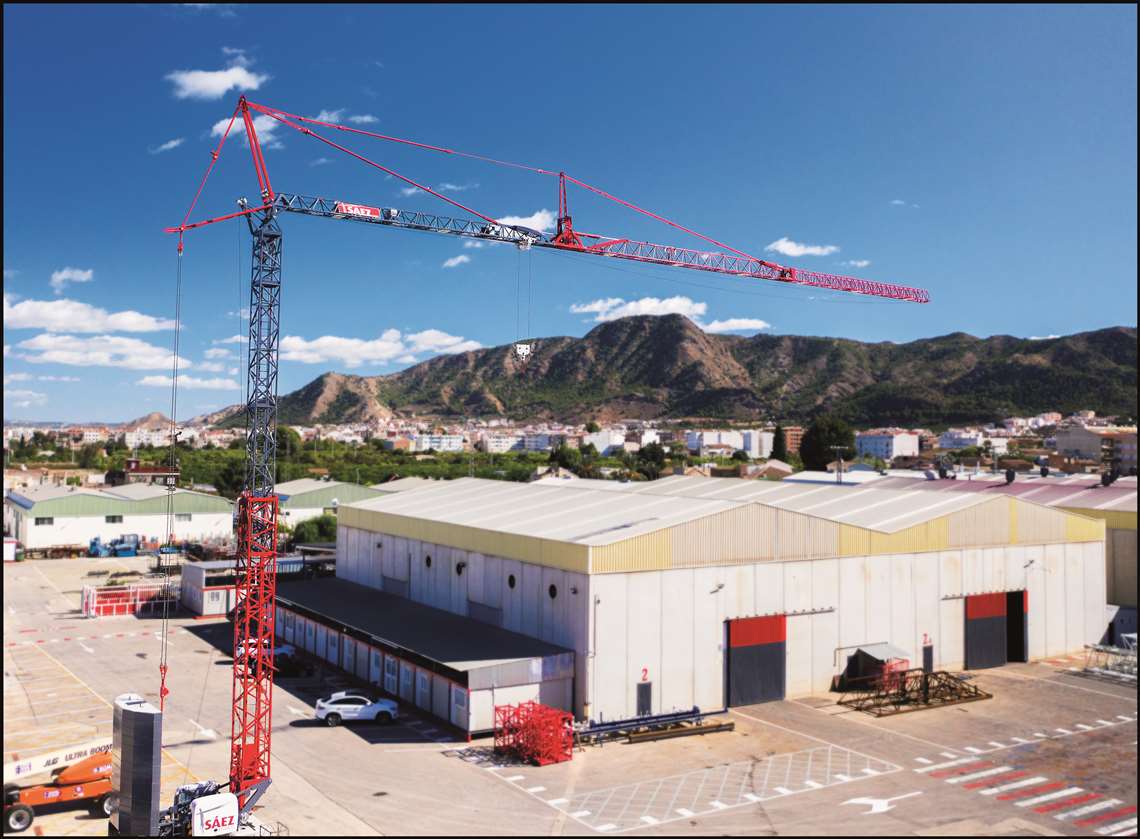
The range-topping telescopic self erector is equipped with a 47-metre jib and a hook height of 40.5 metres. Saez says it spec’d the HT47 specifically to compete with rivals in the market. “The HT47 has been designed to include all the characteristics of the equivalent competitors, plus it adds a bunch of new features that make it special and unique,” says Juan Ballester, area sales manager at Saez.
The HT47 has a telescopic tower combined with a hydraulic jib. “We thought about doing the crane with a cable-folding jib,” explains Ballester, “but some of our clients in markets crucial to us, such as the UK, Ireland, USA, and Canada insisted that they wanted a hydraulic jib that could be folded to help avoiding collision with typical site obstacles like trees, nearby buildings, or oversailing when set in free slew. So we decided to go for a hydraulic-folding jib and offer our clients the best of both worlds.”
The HT47 lifts 1.32 tonnes at 47 metres of radius and has a maximum capacity of six tonnes. It has a maximum height of 40.5 metres without the load chart being derated, says Saez, and the crane is supplied with a two-fall hook. “This sidesteps the complexities of 2/4 fall technology, making the operator’s job easier, faster, and safer,” Ballester explains.
The crane has two counter-swing radius options and can be powered by single phase as well as three phase sources. “This creates a huge advantage for our customers,” continues Ballester. “In some areas these will work, generators are not allowed as they are noisy and generate pollution. Being able to make the crane work in single phase has been the goal from day one of the project. The input and advice of our dealer in Colorado, Creative Lifting, as well as our some of our German dealers, like Weiss or BKL, has been crucial in the development of this crane.”
Saez says the HT47 tries to avoid using overcomplicated technology. It does, however, offer zoning as standard and comes with a remote control with a display. Remote access to the crane is also an option.
The crane has “new generation motors”, says Saez, with an isolation protection rate of IP55 and a reduction ratio of 1:4. A charger for the remote control is installed inside the electrical cabinet, making it easy for the operator to charge the crane´s batteries. “We wanted to launch the best self erector that Saez has ever made, aiming to set the standards for high-end machines in this sector. This crane was built to be the crane of the future, and to lay down the path for the rest of the Saez self erectors,” Ballester states.
Saez has also updated the rest of its hydraulic self erecting range with the aim of making them more competitive in the market. These updates include: the development of hydraulic outriggers; the introduction of single-phase technology as standard across the whole range; a newly-designed fibreglass cabinet for the electricals; an increase in the cranes´ hook heights by an average of two metres; the tip and maximum capacities have been increased; and two-fall technology has been installed across the range.
“Self erecting cranes are a big part of our strategy to become a world player,” says Ballester. “There are many markets where, in order to build yourself a name, you have to compete with an extensive range of self erecting cranes. Markets as important as Germany, France, the USA, or Canada… a big percentage of the cranes sold in these markets are self erectors.”
In addition, Saez plans to launch three new self erector models – the H26, H30 and the H45. We will bring you more details on these as soon as they have been released.
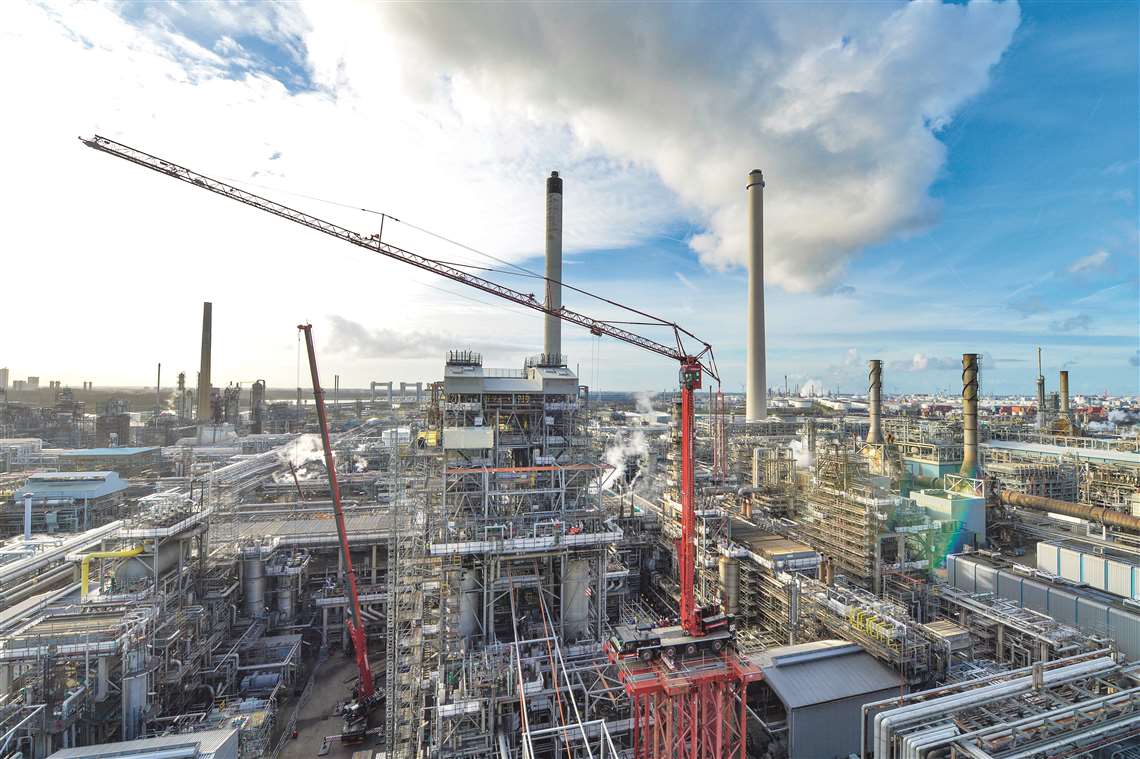
The versality of the self-erector is demonstrated by some out-of-the box thinking from heavy lifting and transport specialist Mammoet when it was faced with replacing a selection of components at Europe’s largest petrochemical facility in Pernis, The Netherlands.
As there was not enough space at the petrochemical facility to erect traditional standalone lifting equipment, Mammoet built a 10 x 8 metre platform using four gantry mast sections which it built from the ground up within the small space available. Once the platform was built, Mammoet installed a Spierings SK597-AT4 mobile tower crane on top of it. Now that this methodology has been proven to work, Mammoet says it plans to use it on other projects where space is at a premium.


